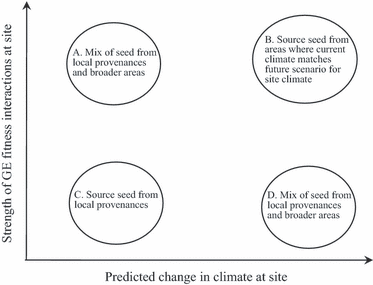Building evolutionary resilience for conserving biodiversity under climate change
- PMID: 25567976
- PMCID: PMC3352557
- DOI: 10.1111/j.1752-4571.2010.00157.x
Building evolutionary resilience for conserving biodiversity under climate change
Abstract
Evolution occurs rapidly and is an ongoing process in our environments. Evolutionary principles need to be built into conservation efforts, particularly given the stressful conditions organisms are increasingly likely to experience because of climate change and ongoing habitat fragmentation. The concept of evolutionary resilience is a way of emphasizing evolutionary processes in conservation and landscape planning. From an evolutionary perspective, landscapes need to allow in situ selection and capture high levels of genetic variation essential for responding to the direct and indirect effects of climate change. We summarize ideas that need to be considered in planning for evolutionary resilience and suggest how they might be incorporated into policy and management to ensure that resilience is maintained in the face of environmental degradation.
Keywords: adaptive potential; biodiversity; climate change; conservation; evolution; evolutionary resilience; genetic diversity.
Figures



References
-
- Balanya J, Serra L, Gilchrist GW, Huey RB, Pascual M, Mestres F, Sole E. Evolutionary pace of chromosomal polymorphism in colonizing populations of Drosophila subobscura: an evolutionary time series. Evolution. 2003;57:1837–1845. - PubMed
-
- Beaumont M, Balding D. Identifying adaptive genetic divergence among populations from genome scans. Molecular Ecology. 2004;13:969–980. - PubMed
-
- Bonin A, Nicole F, Pompanon F, Miaud C, Taberlet P. Population adaptive index: a new method to help measure intraspecific geneytic diversity and prioritize populations for conservation. Conservation Biology. 2007;21:697–708. - PubMed
LinkOut - more resources
Full Text Sources

